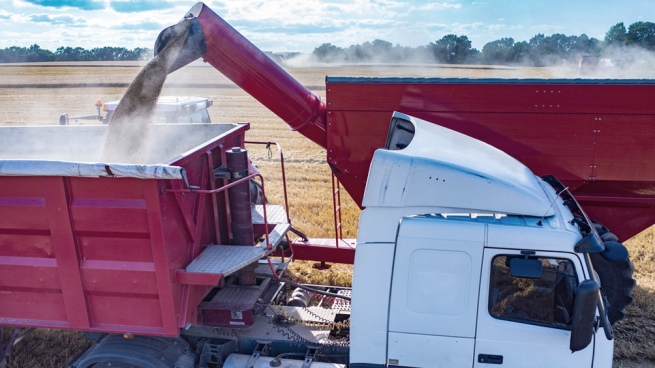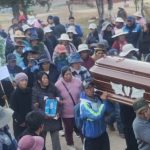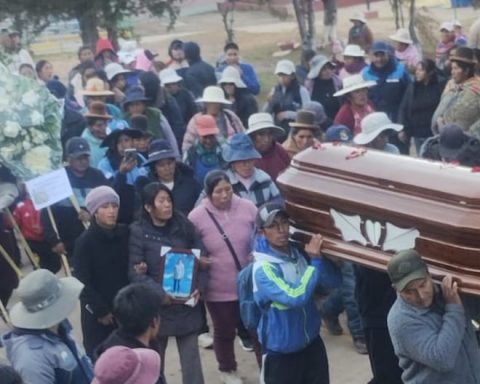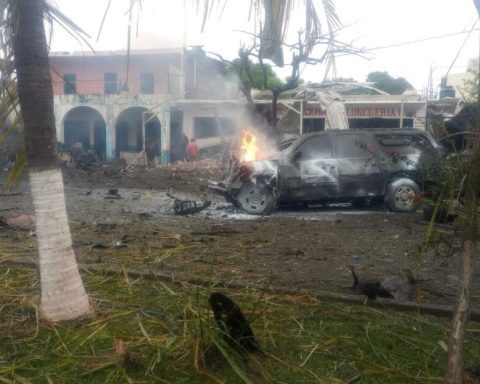The Buenos Aires Cereal Exchange projected this Wednesday a grain production of 127.7 million tons for the 2022/23 campaign, with a planted area of 34.5 million hectares, and an investment by producers expected in US$ 25.6 billion.
The projections were announced by the analyst of the entity’s Agricultural Estimates Department, Martín López, at the launch of the 2022/23 thick campaign and represent, respectively, a fall of 1.6% and 0.1% in relation to the campaign 2021/22.
For his part, the chief economist of the Stock Exchange, Agustín Tejeda Rodríguez, pointed out that the contribution of the main agricultural chains will be lower in 2023 due in part to the impact of the drought, and that the only variable with growth will be the investment of producers, forecast at US$ 25,600 million.
This projection of the cereal entity exceeds that announced at the opening of the exhibitions by the Secretary of Agriculture, Livestock and Fisheries, Juan José Bahillo, who had estimated it at some US$ 20,000 million.
Tejeda Rodríguez also announced that in 2022 the settlement of foreign currency in the agro-export sector could reach “a new record”, and that the provisional numbers for the first nine months are US$31,697 million.
Regarding this last amount, he clarified that “weighs the Export Increase Program (PIE)” that represented settlements in September of approximately “6,000 million dollars”of which it is estimated that “part corresponds to advances in the coming months.”
The analysis of the agricultural numbers
In a summary of the contribution that the agro-industrial sector will make to the Argentine economy in 2023, Tejeda pointed out that in addition to the 127.7 million tons produced, a domestic consumption of 75.8 million tons is expected, exports for US$ 40,900 million ( 9% less than this year) and revenue of US$ 17,515 million (-9.1%).
“Lower quantities and lower prices determine a lower contribution,” he said, adding that “The only variable that would grow is investment, with US$25.6 billion, 6% more than in 2022, driven especially by expenses on inputs, which will increase 32% due to the rise in international prices”.
Previously, Bahillo highlighted “the decision of the producers to invest approximately US$ 20,000 million” in the thick campaign 2022/2023, despite the adversities represented by the drought and the consequences in the energy and food markets of the war between Russia and Ukraine.
After reviewing the effects of the armed conflict in terms of the uncertainty that “significantly harms the quality of life and production costs,” the official pointed out that producers “have the responsibility to invest heavily in planting and harvesting crops “.
“That’s what we have to adding the complex scenario of the drought“, he indicated, to add: “we have come with two years of significant water stress and the outlook in the short and medium term is not very favorable.”
In this context, Bahillo stressed that “producers are going to bury an important sum that is not always valued among seeds, fertilizers, agrochemicals, tillage, leases, and harvest and marketing expenses,” he remarked.
The secretary indicated that the Government is working to “provide predictability and give producers some peace of mind”and, in this regard, he valued the Export Increase Program, which is about to end “with very good numbers.”
For his part, the president of the host entity, José Martins, criticized “politics in general” and asked that “please listen to those who know about the subject.”
“The sector does not need subsidies or perks, but rather clear and predictable rules, sustainable over time, and a gradual reduction in the tax burden,” he asserted.
In this regard, he pointed out that the entity, as part of the Argentine Agroindustrial Council (CAA) has been promoting “a law in this sense”, in reference to the Agroindustrial Development initiative, and that, “What a paradox, the ruling party and the opposition agree, but the law still hasn’t seen the light of day”.
Jimena Vicentín Masaro, an economist at INAI (Institute for International Agricultural Negotiations) argued that agricultural activity is influenced by the “high volatility of the international market”, with distortions at the local level that “affect the option for one crop or another” .
About, He gave as an example that with the Export Increase Program “there was an increase in operations with soybeans of 242% from one month to the next.”
On the other hand, the stock market analyst, Daniela Regeiro, stressed that “the lower intensity in the use of fertilizers” gives Argentina “some flexibility in the face of the current crisis”, marked by the rise in prices as a result of the conflict war between Russia and Ukraine.
Eduardo Sierra, the entity’s agro-climatology advisor, referred to the effects of the drought and announced that, in this sense, “the 2023/24 campaign aims to be the first good one in three years.”


















